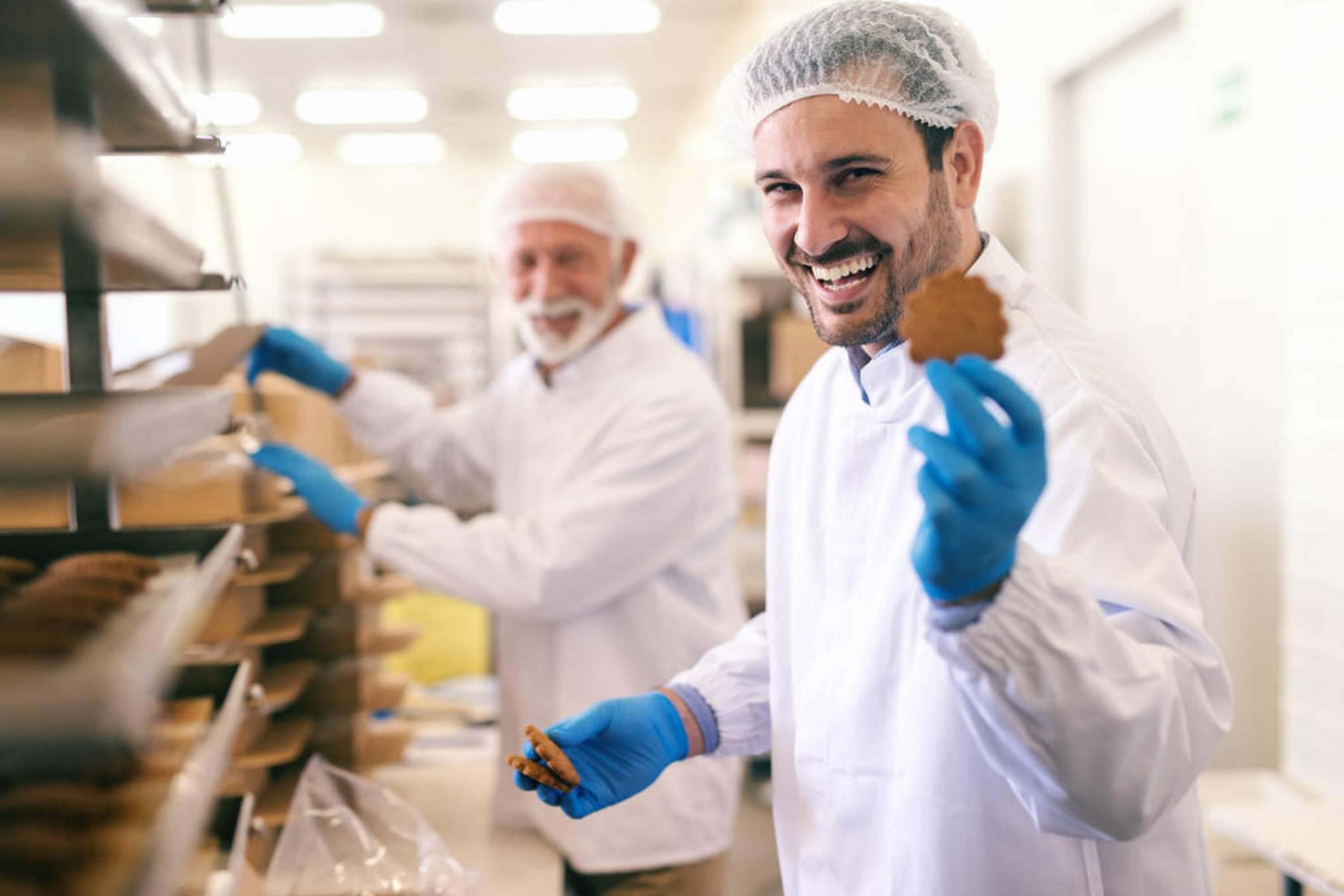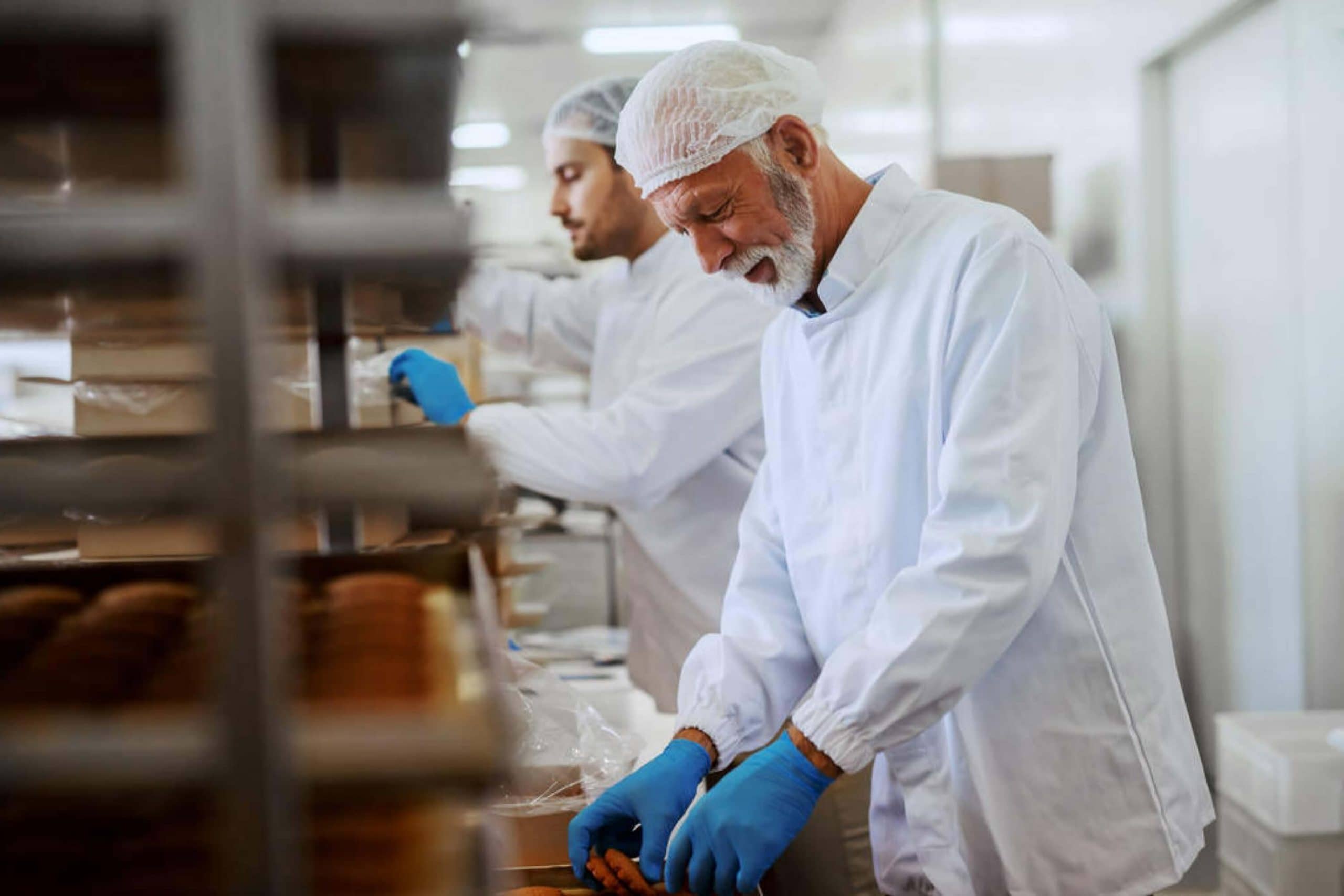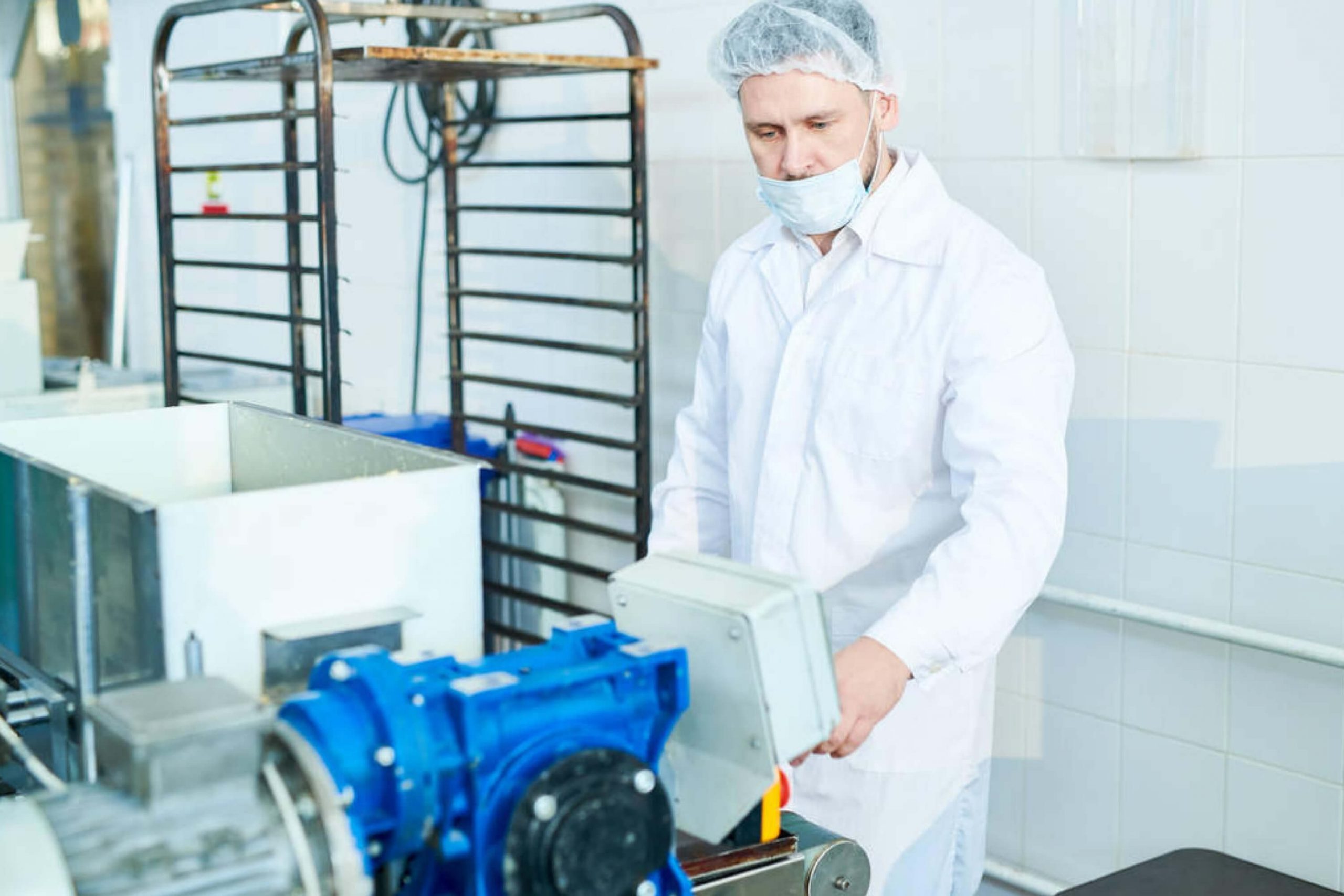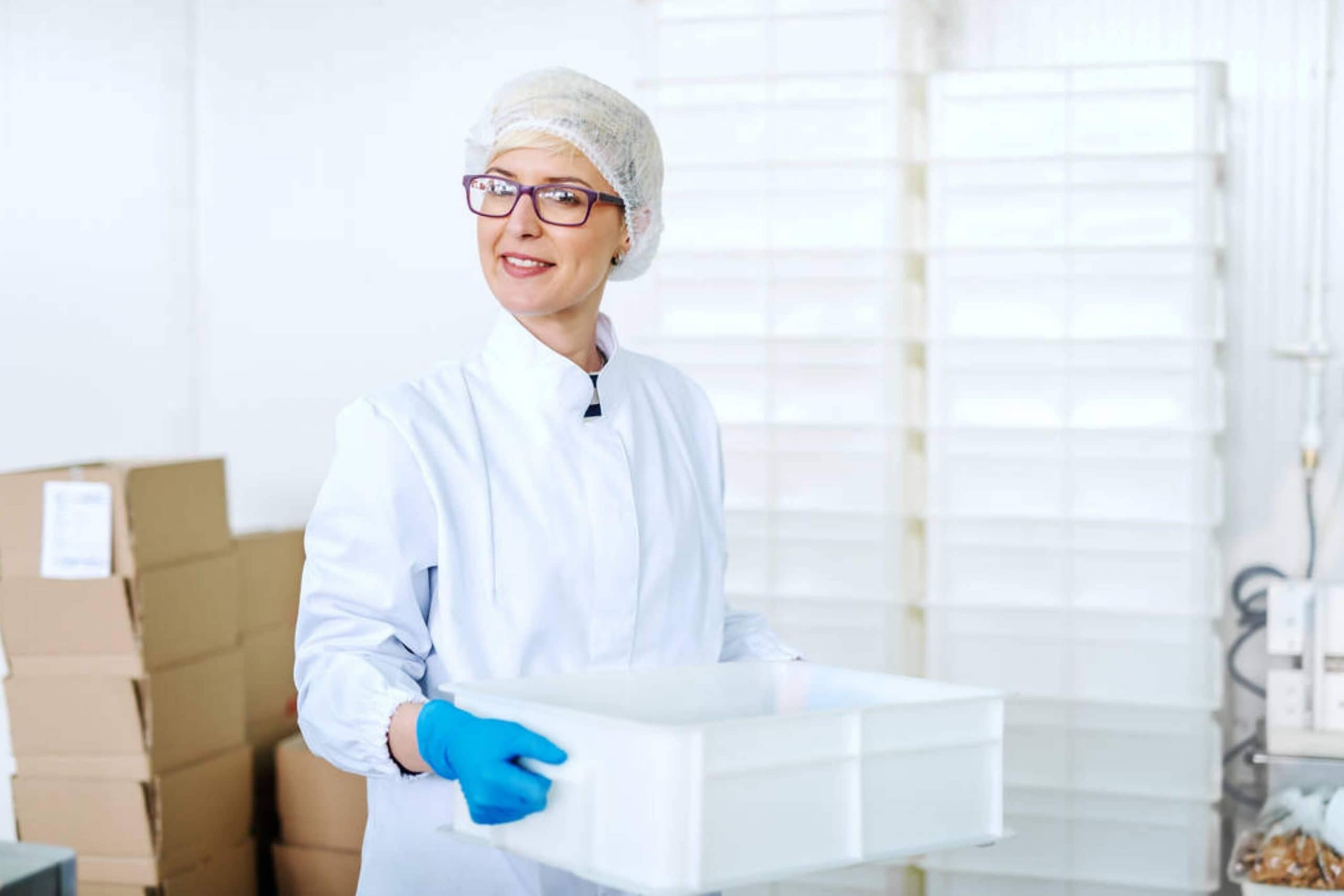If you have ever found a hair in your food, you know how disgusting it is! We are sure that, should this happen again, you will discard the whole plate in the trash immediately no matter how delicious it is. But hairs in your food are not only disgusting. They can also be dangerous!
In this article, we will explain to you what makes human hair in your food potentially harmful and why you should be careful when eating out. Also, you will learn how you can control human hair in your food, and how this problem can be prevented.
Finally, you are going to find out what you shall do in case you find a human hair on your plate when you are eating out in a restaurant, for example. Like this, you will be able to react accordingly and keep yourself healthy.
How Can Hair Be Controlled During Food Preparation?
Of course, human hair found in food is not something that one expects to see on his or her plate! Hair in food looks disgusting and the very first thing you want to do when you notice it is to dunk the entire portion into the trash bin.
But even when we cook at home, separate hairs may end up in a casserole by accident, and there is nothing we can do about it. Or is there anything?
Let’s try to figure this out! Is it possible to somehow control accidental hairs from ending up in our food? Well, if you make food at home, it is more than easy to do! There are just several easy steps that should be taken each time you are about to start cooking:
- Make sure that the clothes you will be cooking in are clean and has no hairs on them.
- Before you start cooking, run over your clothes with a lint roller to remove any hairs that might be there.
- Make sure that all the cooking utensils are washed and clean before you start making dinner/breakfast or any other meal.
- Never brush your hair over the cutting board or over any other cooking surface in the kitchen!
- Avoid playing with your hair while cooking.
- Wear a shower cap or a scarf over your hair to prevent it from waving over the food that is being cooked.
- Before you start cooking, tie your hair in a bun or make a braid. A ponytail might not be a good option since the hair still remains loose.
Like this, you will prevent unwanted hairs from getting into your food by accident. And for sure, make it a rule of thumb for yourself: try not to keep pets in the kitchen while cooking! Pets (especially cats) may leave their hairs and fur in your food as well which might be even more hazardous for your health if you swallow those!
But this is what can be done in your own kitchen. And what if you want to eat out in a restaurant, for example? How is it possible to control or prevent human hair in your food in this case? Let’s just read on to learn.

Related: What Is the Correct Order Of Steps For Cleaning And Sanitizing Utensils By Hand?
Preventing Hair Contamination
We all live in civilized countries, luckily. It means that food preparation is under control and the entire food industry is being watched by the governmental rules and regulations regarding food safety, etc.
So if you go to a restaurant, you are already ensured that the food you are going to order there should be made and served properly. With no hairs in it!
Government has strict rules and regulations for following good hygiene and sanitation practices, for example. This includes wearing special nets for your hair and caps in order to prevent hair from entering foods.
In most countries, people working in the food industry (especially cooks) are required to cover their hair because it can contaminate food. Complete capture hairnets are now available which has led to the decrease of hair falling into foods, thank God!
Some countries even have rules for wearing beard and mustache restraints. For example, in some countries, cooks and chefs can’t wear beards and/or mustaches whilst in other countries, there are certain restrictions, especially for those with long beards and mustaches.
The reason is that these kitchen workers tend to touch their beards and/or mustache absentmindedly which could cause hair to fall into food unnoticed.
In general, good manufacturing practices advise that all personnel wears hairnets, headbands, caps, beard covers, or other effective hair restraints. All this ensures that hair does not come into contact with exposed foods.
As you can see now, it is more than easy to avoid hair from getting into your food if you are making it yourself, and even regarding the food made in restaurants, there are official rules and regulations that oblige the kitchen workers and personnel to wear special protective caps/nets, etc. for preventing hair from getting into the food that will be served.
However, you don’t have to think that finding a single hair in a plate of soup is simply disgusting. Human hair can be a cause of certain health issues, and not only because you might have problems if you accidentally swallow it! Below, you can find more details about it.
Is Human Hair In Food Dangerous For Health?
You might not be aware of this, but in fact, human hair belongs to one of the physical contaminants in food along with stones, metal pieces, insect parts, rodent droppings, etc. Quite a “nice” company, as you can see!
All of these contaminants can cause physical harm as well as result in foodborne illnesses like cholera, typhoid, jaundice, etc.
Those regulations mention that human hair must be controlled from falling into exposed foods in eating establishments as well as in food processing and manufacturing plants. According to food regulators, the term food includes the following:
- foods
- beverages
- bottled water
- nutritional and functional products
So, as you can understand now, none of these products can contain hair! But why exactly human hair could be so dangerous? This is what we are going to explain below.

How Does Hair Causes Contamination?
You will be surprised to note that human hair is one of the “foreign bodies” that is most commonly found in our food! A foreign body means any extraneous piece that is found in food that is not a part of the ingredients.
As a result, any foreign body that is found in food means that this food is contaminated and one should not eat it.
Also, there is another nuance you might be curious to know. Human hair is defined as a physical, as well as a microbiological contaminant. This is because, besides being an extraneous piece, human hair can also lead to the development and spreading of microorganisms in the food.
Oil, sweat, a residue of hair treatment chemicals, and shampoos, dyes, or any other organic matter sticking to the hair become a breeding ground for pathogens when left in processed foods for long periods of time.
In addition, multiple types of research on this subject showed that human hair could contain a number of toxic chemical contaminants.
Where do these contaminants come from? Well, they typically come from the environment that surrounds us. And this is also the way how these toxic substances can get into our food from human hair.
This is why, if you happen to find a hair in your food, better throw that food away or, if you are in a restaurant, ask a waiter to take it away. And it does not matter how delicious it looks or how expensive it is! Your health is more valuable!

Human Hair in Food And the Risks It Brings
Hair in food is hazardous not only because it contains various chemical product residues or contaminants from a polluted environment. It also poses a physical risk as a person can choke on it. A single hair can get stuck in the throat or cause nausea and vomiting.
However, besides being the physical aspect, human hair is a potential route of Staphylococcus aureus contamination. That thing comes right from the human scalp.
Human hair can actually transmit lots of hazardous things including ringworm, as well as fungal infections (that’s if a person is infected by these). Speaking of staphylococcus, it is a type of bacteria that can be found on the skin and hair as well as in the noses and throats of people and animals.
The Centre for Disease Control and Prevention states that the most common way for food to be contaminated with Staphylococcus is through contact with food workers, especially when foods are prepared by hand and not cooked. Hair in a salad or cut fruits, sandwiches, and chutneys could be a problem as hair can remain in these foods for hours.
There is a heavy stigma attached to any food that contains hair, and it does not matter whether it is restaurant food or homemade pickles. Even the popular sun-dried chips can easily be contaminated with foreign matters including hair!
And it can happen very easily since they are left to dry in the open where hair can end up on them simply. As for finding human hair in the restaurant food, it would be due to the lack of good personal hygiene practices.

Conclusion
So, now you know how human hair can cause food contamination and why it happens. We also told you how this problem can be avoided by following a few simple rules. These rules will allow you to cook delicious and contamination-free food in your kitchen.
As for the food served in restaurants, pay attention to the dishes served to you, and don’t hesitate to ask a waiter to take away the dish that has hair or other matters that should not be there. Remember that your health is your priority, so always make sure that the food on your plate is both delicious and safe!
[wp-faq-schema title=”Frequently Asked Questions”]

If someone accidentally swallows a human hair, will that person start suffocating? I found a hair on my plate once, and since then, I’m freaking scared of suffocating because of it!
Well, I’m not sure because I never had that experience (luckily), but I guess that suffocation may not happen for sure. E.g. if one swallows a soft mass of food (e.g. mashed potatoes) with a small short hair in it, that hair might pass by unnoriced. I don’t even know whether a single hair can cause any serious damage to your health!
Am I entitled to some kind of compensation if I find a hair on my plate in a restaurant?
I guess they should serve you another dish for free (either the same one as you ordered, or any other dish that has the same price). Or they might have to make a discount for you. Anyway, you must have some sort of compensation! It’s their fault that the stuff is so careless!
How should a food handler restrain long hair from falling into a plate? Are there any special tricks?
If you are serving food in a restaurant, for example, wearing a hair covering (e.g. a hair net, visor, or cap) will help keep hairs from falling into the food. You may not be required to wear a hair restraint, but if you have long hair, it is a good idea to pull it back to keep it from falling or dangling into the food you serve.
How to wear your hair in a kitchen so that it doesn’t get into tghe food I cook or serve?
Well, it depends on where you’re cooking or serving it. If at home, then you can simply tie a bun or wear your hair braided if it’s long. But if you’re working in a restaurant or cafe in the kitchen, you’d better wear a special hair cap. If you’re a waiter, you can keep your hair braided or make a bun depending on your hair length.
Hi! I need your advice folks. If I find human hair in food, what type of food hazard is that?
Human hair found in food is termed a physical as well as a microbiological contaminant. That’s because besides being extraneous matter, it can also lead to the growth of microorganisms in the food.